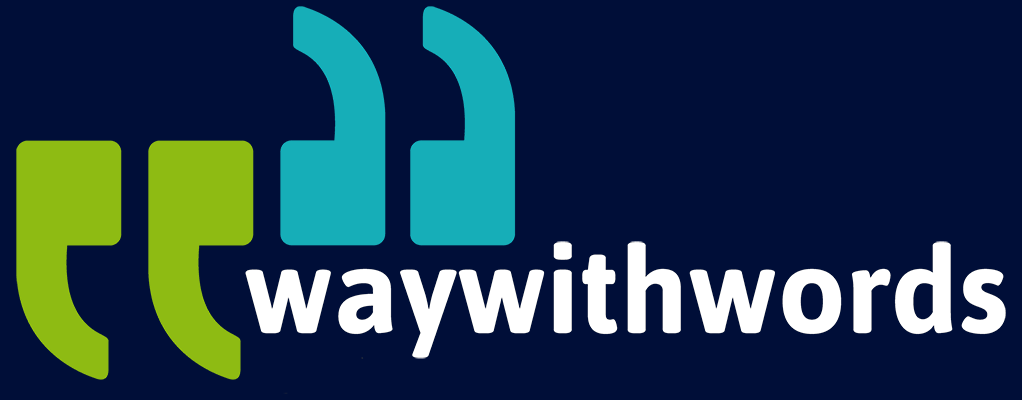Translating Transcripts: Best Practices and Services
How are Transcripts That Require Translation Handled?
Translating transcripts requires more than simply converting words from one language to another. It demands linguistic precision, cultural awareness, and a methodical process to ensure accuracy. Whether you’re a global business preparing materials for international markets, a law firm handling cross-border cases, or a researcher collaborating with international colleagues, high-quality transcript translation is essential. But how does this process work? What practices guarantee accuracy and reliability?
Here are some frequently asked questions on the topic:
- What are the key steps involved in translating transcripts?
- How can translators ensure the context is preserved accurately?
- Which industries most commonly need transcript translation services?
This short guide will outline the best practices, common challenges, and key considerations involved in transcript translation, while also highlighting the role of skilled professionals and the industries that benefit most from these services.
1. The Importance of Accurate Transcript Translation
Accurate transcript translation is essential for ensuring effective communication across languages and cultures. When translation errors occur, they can lead to miscommunication, legal disputes, and even reputational damage. Whether a transcript is used in a courtroom, for business negotiations, or in academic research, even the slightest misinterpretation can have serious consequences.
Accuracy in translation is not merely about replacing words from one language with another; it involves maintaining the original meaning, context, and intent behind the words. Language is inherently tied to culture, and translators must account for cultural nuances, idiomatic expressions, and context-specific terminology. Failing to do so can cause confusion, miscommunication, and even legal complications in critical fields like medicine and law. The challenge increases when translating technical documents, such as patents or medical reports, where precision is paramount.

2. Common Challenges in Translating Transcripts
Translating transcripts presents several challenges that must be anticipated and mitigated. Unlike static documents, transcripts often contain spoken dialogue, which can introduce complexity due to variations in dialect, tone, and informal speech patterns. Spoken language can be less structured than written text, with incomplete sentences, slang, and colloquial expressions that are difficult to translate directly.
Furthermore, transcripts may include industry-specific terminology, technical jargon, and cultural references that require careful adaptation to maintain their intended meaning. Translators must navigate the complexities of context and language structure to ensure that the translated text retains both accuracy and clarity. If these challenges are not addressed properly, the final translation may misrepresent the original content, causing confusion or misinformation.
3. Best Practices for Ensuring High-Quality Transcript Translations
To achieve reliable results, follow these best practices. A successful translation project requires more than just linguistic fluency; it demands careful planning, consistency, and attention to detail throughout the process. Translators must be equipped with a clear understanding of the content’s purpose, target audience, and contextual nuances. Establishing comprehensive guidelines and resources, such as style guides and glossaries, helps maintain consistency across multiple transcripts. Additionally, maintaining open communication between translators, clients, and stakeholders ensures that any ambiguities or concerns are resolved promptly.
4. The Role of Specialised Translators
Specialised translators possess knowledge and experience in specific fields, making them indispensable for accurate transcripts. Different industries have distinct language requirements, and even seemingly simple terms can have vastly different meanings depending on the context. For instance, the term “bill” could refer to an invoice, a proposed law, or even a bird’s beak, depending on the field. Therefore, translators working with legal, medical, or technical documents must have domain-specific expertise to correctly interpret and convey the original content. Specialised translators often undergo extensive training and may hold certifications that validate their qualifications for particular fields.
5. Tools and Technology in Transcript Translation
Advancements in technology have transformed the way transcript translations are performed. While human expertise remains irreplaceable, modern tools enhance efficiency, consistency, and accuracy. The integration of technology in translation workflows has streamlined processes that were once entirely manual, reducing turnaround times and increasing productivity. However, despite these technological advancements, human oversight remains essential to ensure contextual accuracy, linguistic appropriateness, and cultural relevance.
6. Transcript Translation for Legal Professionals
Legal professionals rely heavily on accurate transcript translations to support their work in multilingual legal contexts. Precision is not only crucial for understanding case details but also for meeting the stringent requirements of legal systems in different countries. Legal transcription involves more than simply translating text—it requires knowledge of legal jargon, procedures, and documentation standards across jurisdictions. Translators in this field must be familiar with the legal frameworks of both the source and target languages to avoid potential misinterpretations that could impact case outcomes.
7. Academic and Research Transcript Translation
Global collaboration in academia depends on high-quality transcript translation. Research findings often have international implications, especially in fields like environmental science, medicine, and engineering. Translators working with academic transcripts must understand research methodology, field-specific terminology, and citation standards across different countries. The goal is not just linguistic accuracy but also intellectual fidelity—ensuring the original research intent is preserved in the translated text.
Academic translation is particularly complex due to the diverse ways different cultures structure information and present findings. Translators must ensure that citations and references adhere to the specific guidelines of the target institution or publication, such as APA, MLA, or Chicago style.
Additionally, the academic field often involves highly specialised language and discipline-specific jargon. For instance, a term like ‘bias’ might mean different things in psychology versus physics. Translators need to grasp these nuances to maintain the integrity of the research.
Global research initiatives, like those addressing climate change or epidemiology, depend heavily on accurate translations to allow scientists from different countries to share findings, collaborate effectively, and build upon each other’s work. Inaccurate translations can distort results, hinder progress, and even lead to flawed conclusions. Hence, academic translators must have both linguistic expertise and technical knowledge.

8. Media and Entertainment Industry Needs
Global content requires multilingual transcripts to reach diverse audiences and maintain engagement across different linguistic and cultural backgrounds. In the media and entertainment industry, translation is not just about accuracy; it must also preserve the original work’s artistic intent, humour, and tone. Effective translation ensures that international audiences can enjoy films, television shows, podcasts, and digital content without losing the nuances that make them engaging.
Translators must navigate challenges such as idioms, cultural references, and wordplay, which may not have direct equivalents in other languages. Subtitles must also align with the pace of spoken dialogue while remaining concise and readable. Additionally, timing is critical—subtitles must appear and disappear at the right moments to synchronize with actors’ expressions and intonations.
Beyond entertainment, multilingual transcripts play a vital role in journalism, educational content, and advertising. Global news agencies rely on accurate translations to deliver unbiased reporting across different regions. Meanwhile, marketing campaigns must be culturally adapted to ensure messages resonate with target audiences without unintended meanings or cultural insensitivity. In short, transcript translation in media is a complex yet essential process that requires a balance of linguistic precision and creative adaptation to engage audiences worldwide.
9. Medical Transcription and Translation
The medical field demands absolute precision when translating transcripts. Medical terminology is highly specific, and mistranslations can have life-threatening consequences. Translators must possess a strong grasp of medical terms, procedures, and relevant regulations like HIPAA (Health Insurance Portability and Accountability Act) in the US or GDPR (General Data Protection Regulation) in the EU. This precision is essential because medical terms often have specific meanings that do not translate directly across languages. Additionally, errors in medical documentation can cause confusion among healthcare providers, potentially compromising patient care.
Translators must also be familiar with anatomical terminology, pharmaceutical names, diagnostic terms, and procedural details to ensure the translation remains accurate and clinically relevant. Medical translation extends beyond direct word-for-word conversion; it requires an understanding of the broader context, including the cultural and systemic differences in healthcare practices across countries.
For instance, dosage instructions in different regions may use distinct measurement systems, requiring careful adjustment during translation. Furthermore, regulatory standards like HIPAA and GDPR demand strict confidentiality protocols, necessitating secure handling of patient data throughout the translation process. Employing experienced medical translators helps healthcare organisations maintain high standards of care, adhere to legal requirements, and foster trust with patients across linguistic boundaries.
10. Transcript Translation in Business and Marketing
Global businesses use transcript translation to connect with diverse markets and ensure effective communication across corporate operations. This process involves more than simply converting text from one language to another; it requires a deep understanding of cultural context, industry-specific terminology, and market-specific preferences.
Inconsistent translations can lead to misunderstandings, decreased customer trust, and potential revenue losses. Translators must understand brand tone, market-specific language variations, and business terminology.
Additionally, businesses that operate across borders must ensure their translated content aligns with local regulations and consumer expectations to maintain credibility and engagement in international markets. Inconsistent translations can lead to misunderstandings, decreased customer trust, and potential revenue losses. Translators must understand brand tone, market-specific language variations, and business terminology.

Key Tips for Handling Transcript Translation
- Work with Specialised Translators: Choose professionals with experience in your industry.
- Provide Context and Resources: Offer glossaries, style guides, and background information.
- Use a Multi-Step Review Process: Implement checks at every stage to catch errors early.
- Combine Technology with Human Expertise: Leverage tools for efficiency but rely on humans for nuance.
- Prioritise Data Security: Ensure your translation provider follows strict confidentiality protocols.
Transcript translation is a critical service for businesses and professionals operating across linguistic boundaries. From legal professionals needing precise court records to media companies expanding into international markets, accurate translations are essential. The process involves more than just swapping words—it requires cultural understanding, industry expertise, and a commitment to quality.
By following best practices and partnering with reputable services like Way With Words, you can ensure your transcripts are not only translated accurately but also maintain their intended meaning. Remember, the key to successful translation lies in balancing technological tools with human insight.
With the right approach, your translated transcripts will act as bridges that connect diverse audiences, enabling seamless communication across languages and cultures.
Further Transcription Resources
Translation: This short guide provides an overview of translation principles and practices, relevant to understanding how transcripts that require translation are handled.
Featured Transcription Solution: Way With Words Transcription Services: Way With Words employs stringent security measures to ensure that all sensitive and confidential information is protected throughout the transcription process, making it a trusted choice for clients with high privacy concerns.
